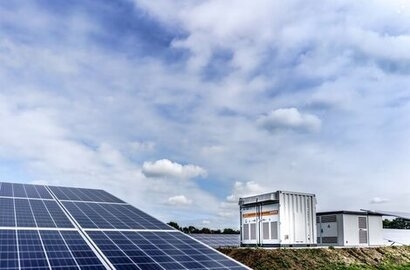
The latest US Energy Storage Monitor report finds that Q4 2021 saw more capacity installed than in the first three quarters combined, despite project delays.
Annual deployments of grid-scale storage nearly tripled year-over-year to 3 gigawatts (GW) / 9.2 gigawatt hours (GWh). Despite a record year, the grid-scale market didn’t meet expectations in 2021, with supply chain challenges delaying more than 2 GW of capacity into 2022 and 2023. Wood Mackenzie forecasts that supply chain pressures and delays within interconnection queue processing will persist through 2024.
“2021 was yet another record for the US energy storage market, with annual installations of multiple gigawatts for the first time” said Jason Burwen, Vice President for Energy Storage at American Clean Power. “Even in the face of continued macro-economic headwinds, interconnection delays, and lack of proactive federal policy, increasing demand for resilient clean energy and volatility in the price of fuel-based generation will drive energy storage deployment forward. Despite supply tightness leading to some project delays, the grid-scale market is still on track for exponential growth.”.”
System component price gains experienced over recent years have nearly been wiped out by higher costs for raw materials and transportation. Specifically, battery module pricing saw the largest increase of all system components due to the increased cost of raw materials.
Residential storage had its strongest quarter to date with 123 MW installed, beating the previous quarterly record of 110 MW in the first quarter of 2021. Increasingly effective solar-plus-storage sales in markets outside of California helped establish the new quarterly benchmark and resulted in a national annual total of 436 MW.
By 2026, annual installations in the residential segment are expected to hit 2 GW / 5.4 GWh, with frontrunners in California, Puerto Rico, Texas, and Florida leading that market segment.
The report found that the California storage market remains resilient as policy and market developments, such as NEM 3.0, shakes up the solar market and that by 2027 California will remain the largest residential storage market, with three-and-a-half times more storage installed annually in 2027 compared to 2021.
The non-residential storage segment delivered 131 MWh in the fourth quarter resulting in 162 MW / 350 MWh of total annual deployments in 2021. Segment demand was driven by increased storage attachment rates within the community solar markets of New York and Massachusetts.
For additional information:

